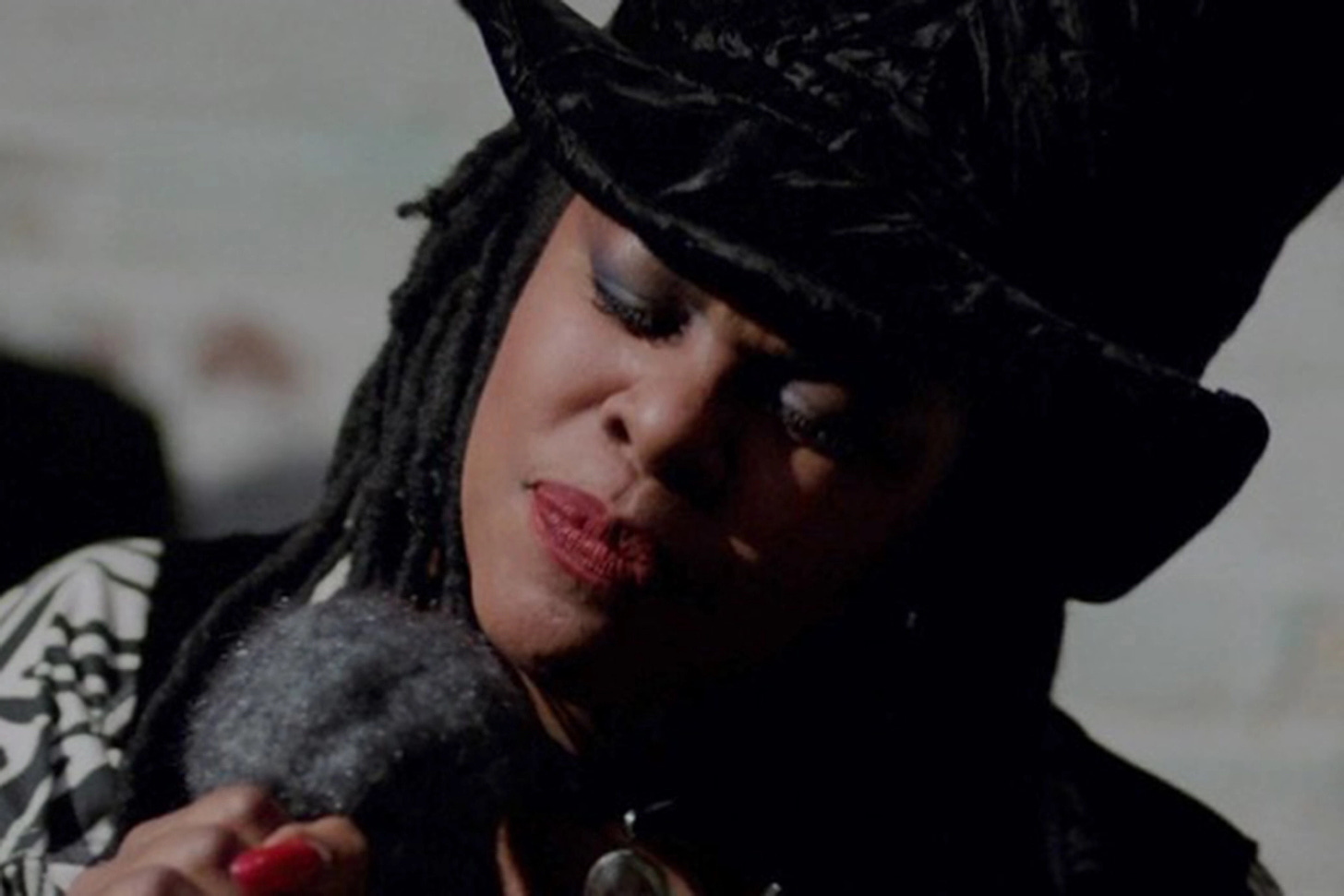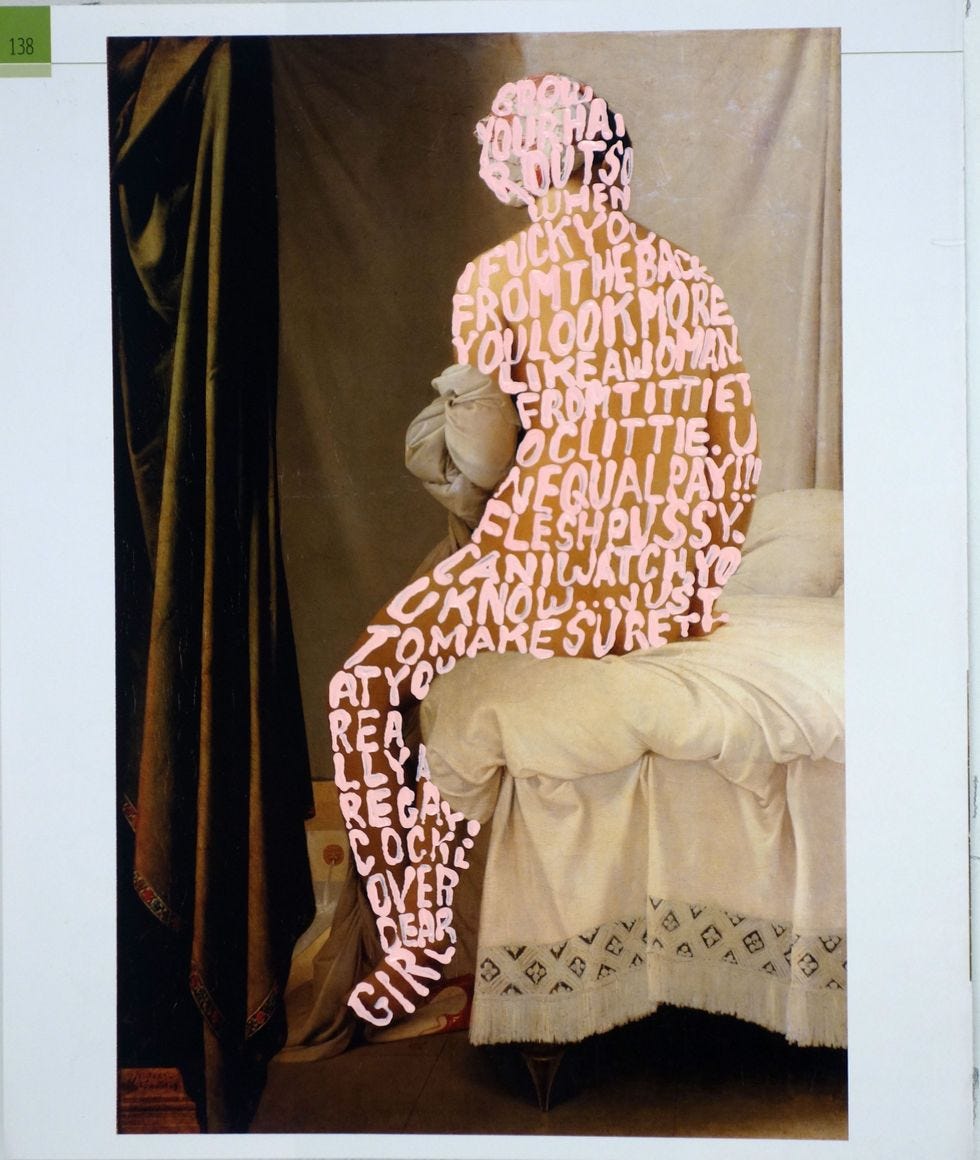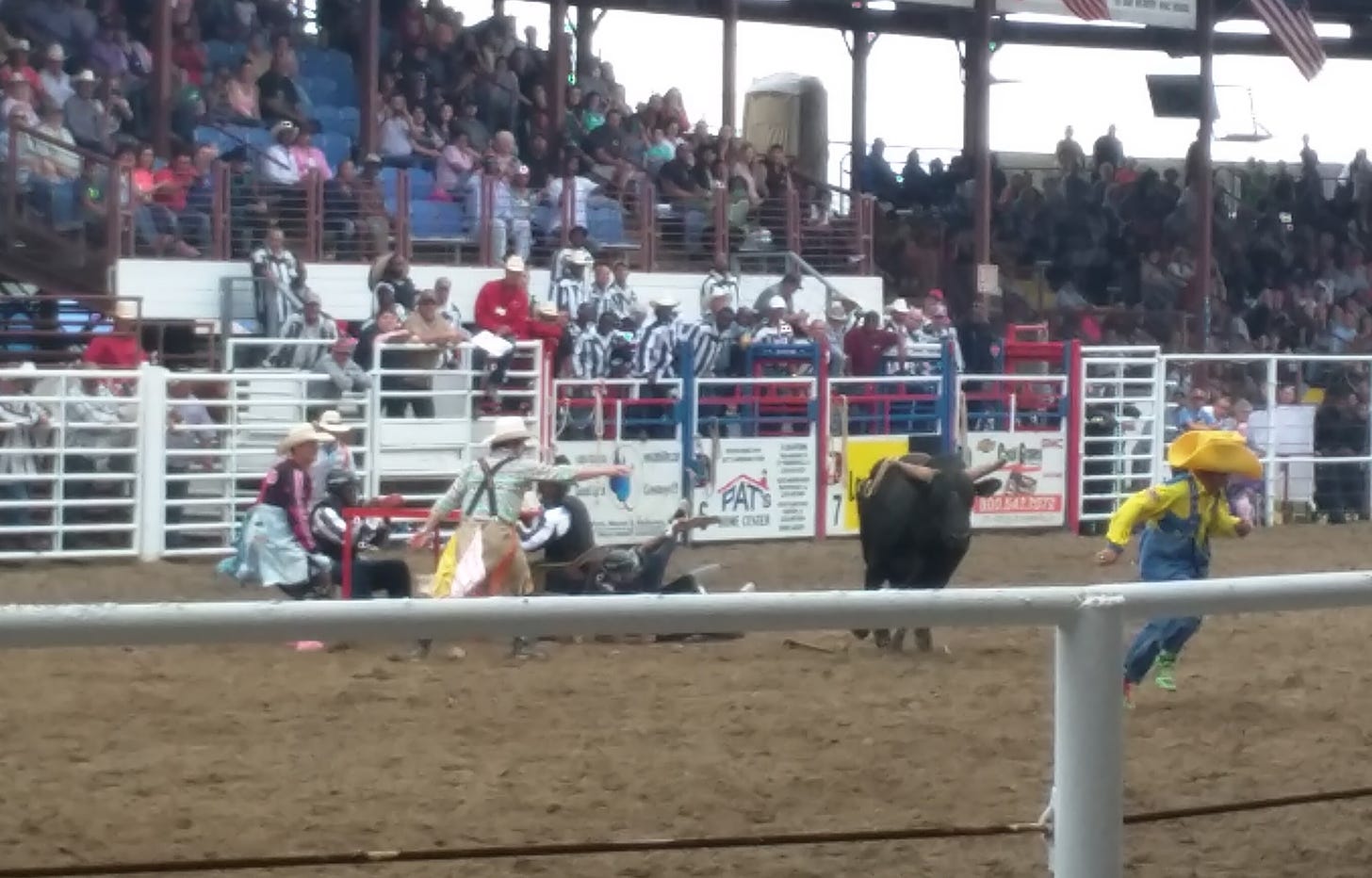RFC, in the tech world, stands for “request for comments.” The original ones were handed out by the builders of the ARPANET, which the Internet was based on, and were literal requests for comments on projects, because they hadn’t been done before. Compared to other scientific papers, they were quite casual, and groundbreaking in that way. These comments became feature requests and improvements and much more. And now, we can share TikTok videos of weasels on trampolines!
 Tiktok failed to load.
Tiktok failed to load.Enable 3rd party cookies or use another browser
Comments are important; for example, if you could click the title of this email and read it on the web, and then leave a comment with your thoughts, it would mean a lot to me. Much of writing is screaming into the void, and one lure of social media for writers was the instant gratification of a response from readers who “get it,” and understand you. I’m weaning off of that addiction to validation, but I still appreciate engaging with readers. As we shift to virtual interactions, we lose access to conversations. (Another great read is Reclaiming Conversation, by Sherry Turkle, who has been studying online behavior since long before the web existed.) So, please comment. It’s good for you.
My request is also informal; I’m asking if you like what you see. What would you like to see more of? The Gilgamesh post is pretty popular, and I could do more like that. I have a few more books of myths that I want to tackle, such as Neil Gaiman’s Norse Mythology, a collection of Irish folktales, another of Scottish ones, Storyland by Amy Jeffs—which tells folktales and history of early Britain—and of course The Golden Bough, which I’ve avoided because it’s so dry, and I feel like I’ve read much of what he discovered secondhand.
I wouldn’t mind discussing those books here. I’m not sure they’ll be as eye-opening as Gilgamesh. Read on, for one that is…
I was happy to see Braiding Sweetgrass: Indigenous Wisdom, Scientific Knowledge, and the Teachings of Plants was on the best-seller list last week, years after publication. This book by Robin Wall Kimmerer is one of few that really made me sit and think, and change how I thought. It’s a beautifully written science, history, and nature book that I recommend to all. Colonists are taught to dismiss indigenous knowledge because we need to justify the genocides our civilizations are built upon; this book proudly declares that “Indigenous Wisdom is Science” and backs it up.1 A version for teens is coming out this fall, and a lot of people will be getting it as a gift. If you want a taste of Kimmerer’s writing, this excellent essay, which I found via Chris La Tray’s substack, is a great read: Corn Tastes Better on the Honor System.
Another great read over the past week or so is “The Elephant’s Tiptoe,” a wonderful essay on the nature of grief, by Hannah Fischer, who you may know from her lovely newsletter WanderFinder, or her comments in the comments section. (Hannah comments a lot! Be like Hannah.) She’s a fine writer, as her newsletter shows, but this essay is on another level. Great work, Hannah.
I’ve been reading more nonfiction lately. Fiction-wise, I read the deliciously creepy novella The Boss in the Wall, by Avram Davidson, and the forgettable Fox 8 by George Saunders, who I usually like, and an amusing children’s book, Skunk and Badger, by Amy Timberlake. But the book I’ve dived into is Featherwood: A Memoir of Two Fathers and a Magpie, by Charlie Gilmour, about rescuing a baby magpie, and getting back in touch with his awful father, the poet-activist Heathcote Williams. His adopted father is Pink Floyd band member David Gilmour, and his mother is writer Polly Samson, so he had plenty of PR and editing available, and it’s an enjoyable read so far.
I was estranged from my father when he died, and we never had the chance to restrange, so I sometimes enjoy reading the memoirs of people who have. This Heathcote fellow sounds like a real twat, to use the British parlance. I hope he redeems himself somewhat before the end of the book. I looked him up on Wikipedia, and he died in 2017, which sort of ruins the ending. It’s easy to change your ways when you’re on your deathbed. I also made the mistake of looking at the author’s Instagram, which was on the book flap, and I don’t see any magpies.
So it’ll be a cheery book all around, seems like. Sometimes it’s good to be pessimistic, because then you’re delighted when the world proves you wrong, for just one moment. That’ll teach me to look stuff up on my phone when I ought to be reading.
Sometimes you only know someone after they die; for me that was the case with Q Lazzarus, aka Diane Luckey, the singer and musician behind “Goodbye Horses,” and other songs featured in films by Jonathan Demme. The director met Luckey when she drove him in a taxi, and she was playing her music on the stereo. He asked who it was, and after that, he used her music in many of his films. She even sang in Philadelphia (pictured above). Unfortunately, she never struck a record deal, and she died last month, while a friend was making a documentary about her coming out of reclusion. Sometimes that’s the way that it goes. Rolling Stone has a good obituary, which most of this came from.
An artist who was overlooked but is not dead, who you can still enjoy, is Betty Tompkins. Her art is unabashedly feminist and sexual; one or the other kept her from being exhibited properly for a long time, but that is changing. Thanks to Hannah Fischer for sharing this article with me.
A somewhat unlikely artist who created rather stunning and unapologetic pieces in her own right, was Gloria Vanderbilt. I saw one of her Dream Boxes in Joyce Carol Oates’s house, and she told me a little bit about them then, but this article she wrote for the Ontario Review tells their story in detail, and is a worthwhile read. (I would have titled it The Box that Gloria Vander-Built).
I’m trying to embrace and explore South New Jersey, more than just the Pine Barrens. I’ve found a river tour to take; there’s an astronomy club who sets up telescopes in a field and lets visitors peek at planets and stars; a bluegrass show at Albert Music Hall (not that Albert Hall) in the Pines; and the country’s longest-running rodeo show. The New York Times profiled Cowtown Rodeo, which I’ve meant to visit because they have a Cowboy Muffler Man, and I’ve been photographing these kitschy roadside relics. The only rodeo I’ve attended was the Angola Prison Rodeo, which was thrilling and unpleasant, because the inmates don’t get to train like a rodeo rider can. I wrote in depth about that rodeo in The Boy from County Hell, but I think I’d enjoy one that wasn’t held on prison grounds. My friend Christa Faust was attending a lot of rodeos for research on her next Angel Dare novel before the pandemic, but she’s branched out into comics and graphic novels instead. Rodeo life is tough.
Back to Muffler Men! Here’s Nitro Gal, who stands not far from my neighborhood; she’s a Miss Uniroyal, used to sell tires in the ‘60s. Yes, she was modeled after Jacqueline Kennedy, if you note the resemblance. Other “Muffler Man” are Vikings (selling carpets) and Paul Bunyans, and “Mortimer Snerd,” who looks a lot like Alfred P. Newman on the Mad Magazine covers. I don’t have nostalgia for that time, but I find these statues to be the most pleasant form of advertising.
We’ve got a Viking Carpet Man nearby that I need to visit, not far from Millville. There’s a wildlife management area there where one New Jerseyan keeps saying he’s photographed Bigfoot. The videos on Youtube are … less than convincing. But it’s also near Fries Mill, the Maurice River Bluffs, and the Bayshore Center, all which I plan to explore. So I’ll keep an eye out for interdimensional sasquatch while I’m out there.2
Next on my reading list: Dark Emu by Bruce Pascoe, about indigenous Australian civilization before colonization, and 1491: New Revelations of the Americas Before Columbus, by Charles C. Mann.
Disclaimer: I have a sasquatch emblem on the Subaru, but I’d be pleasantly surprised if there are any as-yet-undiscovered hominids still living.










I think I subscribed to your newsletter after clicking a link in the Badreads newsletter. I thought the story about Coco was heartbreaking, but beautifully written. I didn't know then that I would now have a little dog. My mom passed away last month and my sisters and I didn't know how to find someone to take him. We decided to put him on a plane and fly him from NM to CA to live with me and my husband and sons. I had a complicated relationship with my mom (she numbed pain with alcohol and I took on adult roles), which has made the grieving process easier, but maybe also harder. My sister said there was no medical reason for her to hold on as long as she did in the ICU. She said my mom was just waiting for me to get there. I don't really believe that. What I feel desperate to believe is that she knew, even when she was in that deep coma, that I would take her little dog. I worry that she doesn't know, which is ridiculous because she's gone, but the thought is still there. For some strange reason I need to know that in her final moments she knew I would take her sweet little dog and that I would try to take care of him the same way I tried to take care of her. Anyway, that was probably too much information. I never leave comments, but it felt good to write that down. I love the book recommendations in your newsletter- thank you for the Braiding Sweetgrass recommendation, and I loved "The Elephant's Tiptoe" (I just subscribed to WanderFinder). I've enjoyed reading everything in your newsletter- it's fun to see places I've never been, and read about myths etc. I know almost nothing about. And I highly recommend adopting a dog. We already can't imagine our family without him.
My wife read "Braiding Sweetgrass" and raved about it. I haven't gotten to it yet. You might like "Deep" by James Nestor for another hot mix of science, culture, and philosophy.